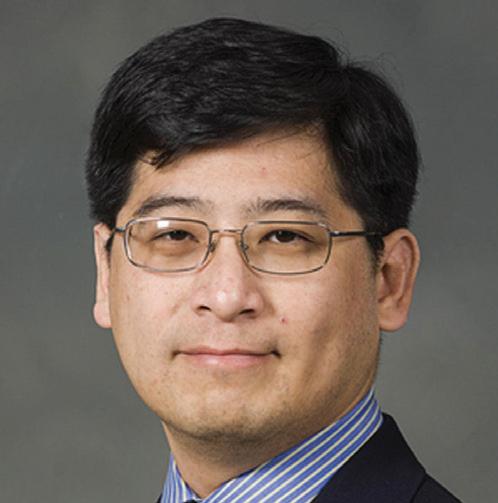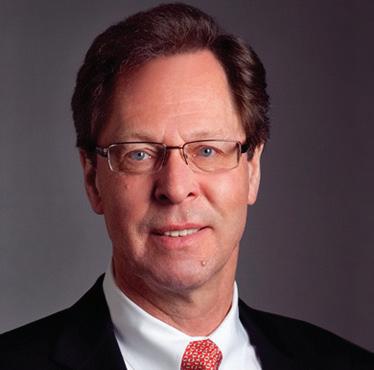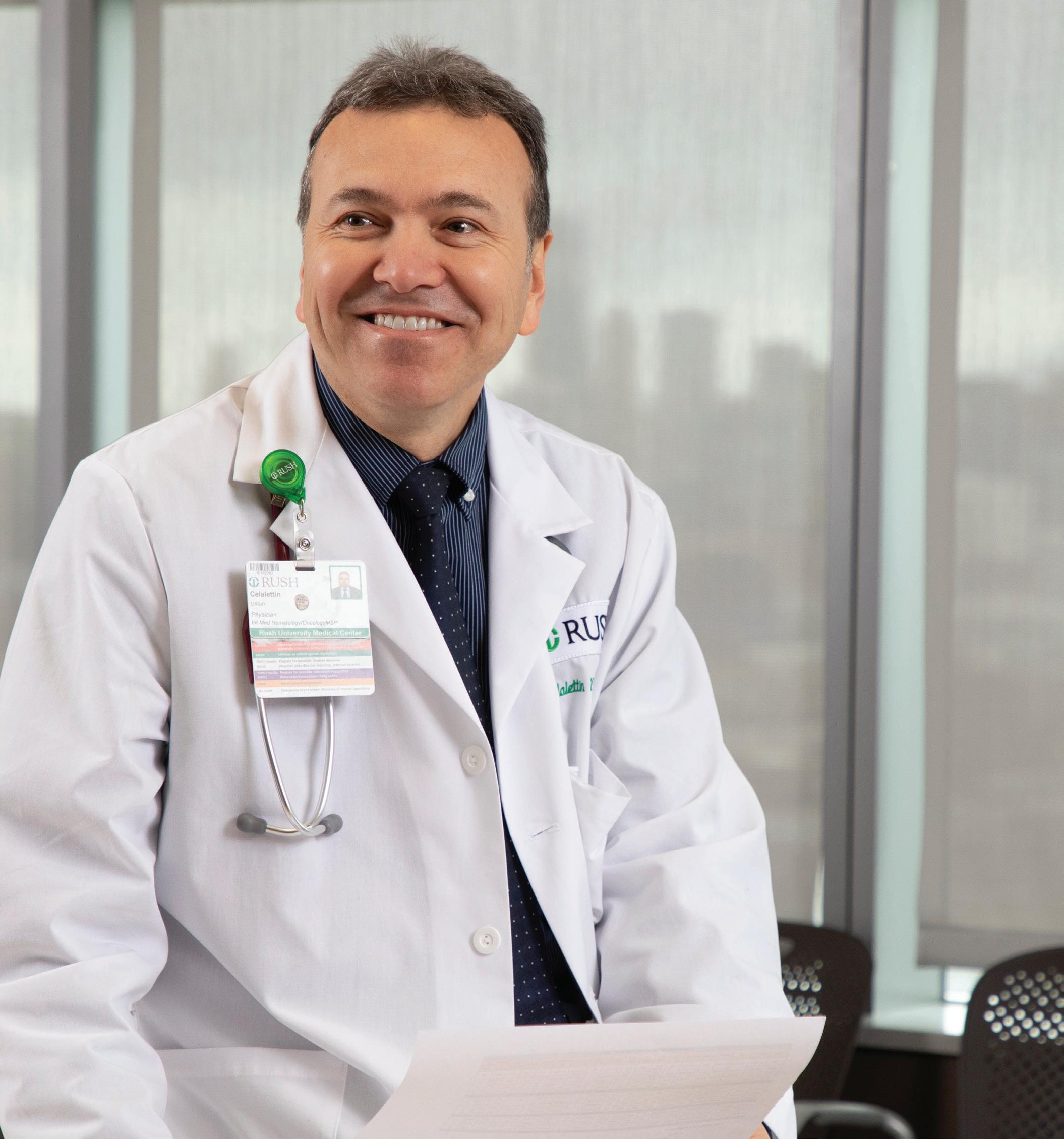Honoring the Rush-Coleman Foundation Partnership and Mike Hennessy’s Leadership


Honoring the Rush-Coleman Foundation Partnership and Mike Hennessy’s Leadership




The Fannie May Candy Company and Rush became neighbors on Chicago’s West Side early in the twentieth century. In the decades since, Rush and The Coleman Foundation have grown and changed side-by-side. An enduring partnership like ours is so rare. On behalf of Rush leaders and staff, we are grateful for the support, guidance and endorsement The Coleman Foundation has given Rush as we work together to improve Chicago’s health.
To date, the Foundation has invested more than $13 million in patient care, research and education at Rush, making an unparalleled impact on our cancer program. Much of this philanthropy was under the direction of Mike Hennessy, an exemplary partner to me and many others at Rush.
Mike, your career is a testament to The Coleman Foundation’s vision of serving as “a thoughtful and active participant helping nonprofit organizations and local institutions in the greater Chicago area.” Over the decades, you have spurred the Foundation to embrace strategic investments while finding great value in the stories and people behind the gifts. Like so many of us in the Rush family, I am proud to call you a friend and am assured we will continue to share successes together.
With nearly 50 years of philanthropic partnership to celebrate, we salute Mike and The Coleman Foundation as you embark on a new era of leadership. We hope you enjoy this time capsule of nearly a half century dedicated to improving life for Chicagoans.
With gratitude,
Diane M. McKeever Senior Vice President, Philanthropy and Chief Development Officer Rush University Medical CenterOpposite page left top:
Opposite page left bottom: The Armour Academic Center of Rush University in 1983.
The pavilion of Presbyterian Hospital in 1912, the predecessor of Rush University Medical Center.J.D. Stetson Coleman and Dorothy W. Coleman, owners of Fannie May Candies, established The Coleman Foundation in 1951, making its first gift to Rush in 1973. The Thorne family purchased the candy company in 1977 and appointed John Hughes as chief executive officer. Jean D. Thorne and her eldest son, Thomas, served as trustees on the Foundation’s board.
In 1983, at the close of a meeting presenting Rush’s plans to establish Illinois’ first bone marrow transplant program, Jean shared personal news: Within the next few weeks, she would accompany Thomas to Seattle, where he would receive a bone marrow transplant from his sister.
The Coleman Foundation saw that Thomas’ experience was not an outlier. Had timing and resources been different, Rush would have been able to offer him care closer to home, where Thomas would have had his young daughter and the rest of his family by his side. No one should have to leave a major city like Chicago, losing valuable time with their loved ones, to access world-class treatment for cancer.
Driven by this conviction, the Foundation committed $3 million — then the largest single grant it its history — to seed Rush’s bone marrow transplant program and endow The Coleman-Fannie May Candies Foundation Chair of Blood and Bone Marrow Transplant (now The Coleman Foundation Chair). In recognition of this landmark gift, Rush named the Thomas Hazen Thorne Bone Marrow Transplant Center in honor of Thomas, who died of leukemia at the age of 32.
Over the next five years, The Coleman Foundation created a regional network of scientific thought leadership in bone marrow transplant, establishing endowed chairs at Loyola University Chicago, Northwestern University, the University of Chicago and Notre Dame University. The first of their annual symposiums to unite these leaders was hosted by Rush.






“The commitment that Rush-Presbyterian-St. Luke’s has made will be strengthened and its progress accelerated by the compassionate concern of The Coleman Foundation for the people of our region and for the advancement of knowledge in this challenging field of medicine.”
— Harold Byron Smith Jr., Chairman of the Board of Trustees, 1978-1988


Today, Rush’s bone marrow transplant and cellular therapy program is nationally renowned. Rush is one of the first centers in Chicago to offer chimeric antigen receptor T-cell therapy (CAR T-cell therapy), the latest development in immunotherapy, and our care teams pride themselves on treating the psychosocial aspects of cancer as well as the disease itself. We would not be leading this work today without the visionary investment of Jean Thorne, John Hughes and The Coleman Foundation.
After the 1991 sale of Fannie May Candies, Mike Hennessy, who had served as the company’s chief operating officer, began his tenure as president and CEO of The Coleman Foundation. John Hughes remained active on the Foundation board for many years.

When considering new commitments, John and Mike visited with Rush physicians and hospital leaders on-site, seeking to understand not only the barriers to survival and quality of life, but the role that a grantmaker could play in finding sustainable solutions. As advances in medical sciences made once-novel cancer treatments more common and effective, Foundation leaders evaluated how to help fill other gaps in the continuum of cancer care. Mike oversaw a gradual shift to the focus on patient-centered care and quality of life that remains integral to The Coleman Foundation’s approach to this day.
Alongside Mike and John, Jean Thorne worked diligently to see Rush’s Bone Marrow Transplant Center open and then expand once more. Jean also lent her time and voice to Rush University Medical Center’s Cancer Leadership Committee, a group of local philanthropists and civic leaders who provided guidance and feedback to Rush’s leaders and trustees.
Sadly, Jean Thorne also called upon Rush’s clinical expertise. She passed away in September 1995, just seven weeks after being diagnosed with lung cancer. Rush and The Coleman Foundation commemorated her legacy with the Jean D. Thorne Family Room, offering privacy to patients and their guests within the Thomas Hazen Thorne Bone Marrow Transplant Center. These spaces have evolved to become The Coleman Foundation Bone Marrow Transplant Unit.




Opposite page: The Coleman Foundation’s Rosa Berardi, Mike Hennessy; Rush University’s Howard Kaufman, then-director of the Rush University Cancer Center, Larry Goodman, MD, then-CEO of Rush University Medical Center and President of Rush University, and Diane McKeever, senior vice president of Philanthropy.
In 2005 The Coleman Foundation made the largest commitment in its history: a $5 million gift to establish the Coleman Foundation Comprehensive Cancer Clinics at Rush. With support for the design, construction and state-ofthe-art technology of the Outpatient Cancer Center, it transformed the culture of cancer care at Rush.
At the time, the concept of patient-focused design was revolutionary. Health care was changing: Cancer treatments were no longer a one-size-fits-all regimen, but the existing footprint of the Medical Center’s facilities distributed medical oncologists, surgeons, radiation oncologists and clinical trial enrollment across multiple buildings and floors. Co-locating nearly all services in a single suite, the comprehensive clinic model united multidisciplinary teams of specialists to build care plans unique to each patient and their cancer. Working with and near each other, care team members built knowledge and trust, continually communicating from diagnosis to remission.



In January 2011 Mike Hennessy, Rosa Berardi and the rest of the board and staff of The Coleman Foundation joined Rush to celebrate the opening of the Outpatient Cancer Center. In the decade since, new Coleman Foundation Comprehensive Clinics have included those established for bone marrow transplant, leukemia and lymphoma. These clinics encompass new supportive oncology services and helped to establish Rush University Cancer Center as one of U.S. News & World Report’s top 50 cancer programs in the nation in 2020.
in a March 30, 2007, press release announcing The Coleman Foundation’s gift to establish comprehensive clinics at Rush
Opposite page top left to right: Rush hematologist Parameswaran Venugopal, MD; Mike Hennessy; Stephanie Gregory, MD, Rush hematologist; Philip Bonomi, MD, a Rush lung cancer specialist.
Opposite page bottom: Celalettin Ustun, MD, and colleagues meet with transplant patient.
“The Foundation has initiated programs to raise the standard of care in the Midwest. ... We continue to support our belief in Rush University Medical Center and the important role it plays in cancer treatment in the Chicago metro area.”
Michael W. Hennessy
In the last decade, The Coleman Foundation asked a courageous question to redefine their approach to cancer care: “How can we better support patients during their cancer journey?”
Evidence showed that wellness, navigation and psychosocial programs improved patients’ health outcomes but were rarely reimbursable or accessible to all patients who could benefit from them. After reviewing recommendations from the Institute of Medicine and consulting with Rush and other regional leaders, the Foundation determined that they could make the greatest impact by funding supportive oncology.



To make supportive resources more accessible and consistent, The Coleman Foundation convened and funded the Supportive Oncology Collaborative. This forum for shared learning has fostered the development and pilot testing of tools and protocols for psychosocial distress screening, resource referral and care sequencing. Rush is proud to have actively participated in each cycle of this work, involving adult, pediatric, and adolescent and young adult populations. Built in Chicago, the collaborative has produced training modules and resources that now engage cancer leaders across the nation.
“As expected, a cancer diagnosis triggers anxiety, depression and distress for patients and their families. Quality care requires treating the whole patient, not just their cancer — and members of the Supportive Oncology Collaborative are making important strides in improving care by bringing in additional providers and services that patients and their caregivers need.”
Michael W. Hennessy
Further incorporating recommendations from the Institute of Medicine, a generous 2012 grant from The Coleman Foundation established The Coleman Palliative Medicine Training Program. Co-directed by Rush physician Sean O’Mahony, MB, BCh, BAO, this cross-institutional collaborative provides affordable, accessible inter-professional training to increase the number of Chicago-area health care professionals with skills and confidence in palliative care. The program also aims to mitigate burnout and turnover in a field where care providers may experience feelings of failure, grief and loss.
The Foundation’s investment also included early and continuing support for frontline care through the Waterford Place Cancer Resource Center at Rush Copley Medical Center in Aurora. Waterford Place provides a wide range of free programming and resources, including education, massage, wig fittings and psychosocial support, for anyone affected by a cancer diagnosis.
Opposite page top: Sean O’Mahony, MB, BCh, BAO, director, Section of Palliative Medicine, and co-director of The Coleman Palliative Medicine Training Program.
Opposite page bottom: Angela Johnson, DACM, a practitioner of Chinese medicine and acupuncture in the Supportive Oncology Program, connects with a patient.


The longevity and richness of our partnership with The Coleman Foundation is unsurpassed at Rush. The Foundation’s attention to challenges and opportunities in cancer care and focus on Chicago’s health care sector has helped Rush build excellence across our institution and changed countless lives.
Growth and change are a constant at Rush. Mia Levy, MD, PhD, The Sheba Foundation Director of the Rush University Cancer Center, joined Rush in 2019. She aims to make Rush a leading force in cancer research, precision medicine and community engagement and education. In the next 10 years, Rush aims to triple our patient capacity with leading-edge programs across the full continuum of cancer care.

One of Dr. Levy’s first actions as Cancer Center director was hiring Rush’s first Director of Supportive Oncology, a clear outcome of The Coleman Foundation’s impact in our region. Recruited in late 2019, Teresa Deshields, PhD, is a national leader in research and education and has quickly built a multidisciplinary care team to improve social, emotional and physical support for patients with cancer and their families. Establishing equitable and accessible care is key to Dr. Deshield’s vision.

Key to expanding our regional leadership will be the Joan and Paul Rubschlager Building, currently under construction and planned for opening in 2022. The 48,000-square-foot outpatient facility will serve as a state-of-the-art home for cancer and neuroscience care, including supportive oncology. Rush expects to serve 1,000 patients a day within this building, and the Cancer Center will use this space to deliver the best patient experience and expand access to new treatment options via clinical trials.
This level of excellence, with patients at the center of all we do, is just the beginning at Rush. Leaders from Rush University System for Health, Rush University Medical Center and the Rush University Cancer Center are grateful for the direction and momentum The Coleman Foundation has provided for cancer care in Chicago. Decades of collaboration with Jean Thorne, John Hughes and Mike Hennessy have ensured Rush’s world-class programs can reach all who need them. We look forward to the next phase of our partnership as The Coleman Foundation welcomes Shelley A. Davis to its helm, and remain inspired by this simple belief: the best possible cancer care should be available to all Chicagoans.
